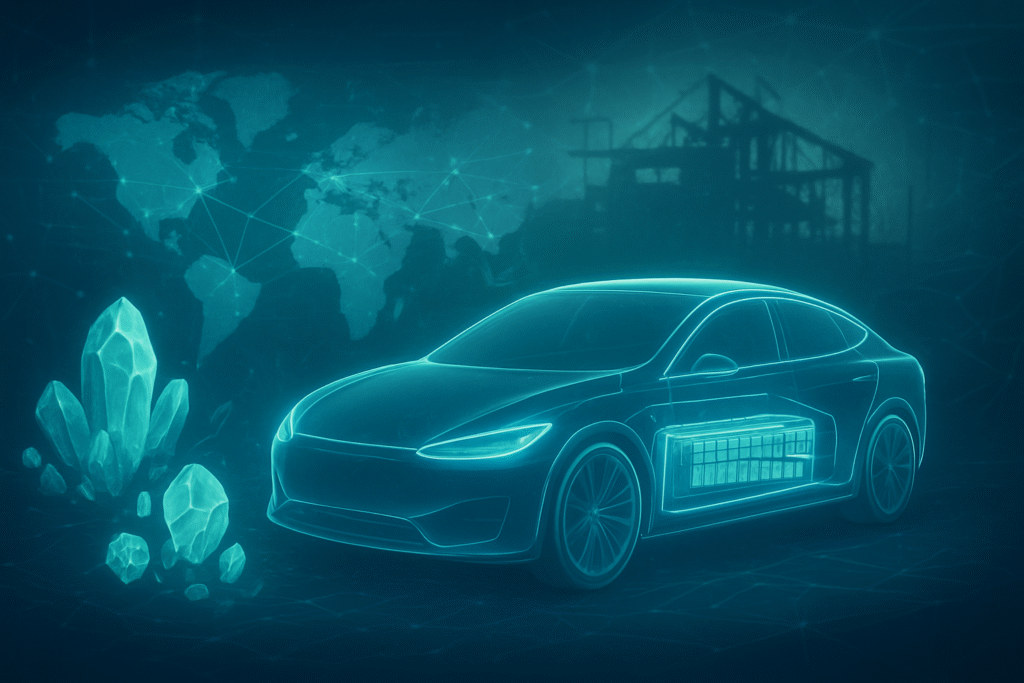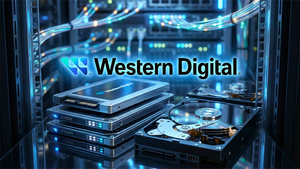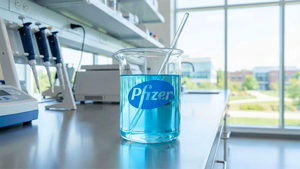
October 2025 proved to be a pivotal month for the global battery industry, characterized by a complex interplay of geopolitical strategy, technological innovation, and significant shifts in supply chain dynamics. From the unexpected collapse of a major battery component plant in Michigan to a landmark critical minerals deal between the United States and Australia, and General Motors' (NYSE: GM) ambitious strides in Lithium Manganese Rich (LMR) battery technology, the month underscored the rapid evolution and strategic importance of energy storage. These developments collectively highlight a global race for battery dominance, driven by the escalating demand for electric vehicles (EVs) and renewable energy solutions, while also revealing the intricate challenges of international collaboration and material sourcing.
Strategic Shifts and Technical Frontiers in Battery Technology
The month's battery news painted a vivid picture of an industry in flux, marked by both setbacks and breakthroughs. The highly anticipated $2.4 billion electric vehicle (EV) battery plant by Gotion Inc. (SHE: 002074) near Big Rapids, Michigan, officially became defunct on October 23, 2025. Michigan state officials announced Gotion was in default of its agreement, citing the company's failure to meet contractual milestones and lack of meaningful progress for over a year. This cancellation, stemming from years of controversy, lawsuits, local opposition, and intense scrutiny over Gotion's ties to China, represents a significant blow to Michigan's aspirations of localizing EV battery component manufacturing and creating 2,350 jobs. The state is now seeking to recoup $23.6 million used for land purchase and has halted a $125 million state grant, underscoring the geopolitical sensitivities impacting foreign direct investment in critical sectors.
In stark contrast, a monumental critical minerals deal was formally signed between the United States and Australia on October 20, 2025. This agreement, a key outcome of a bilateral summit between US President Donald Trump and Australian Prime Minister Anthony Albanese, involves an $8.5 billion pipeline of "ready-to-go" projects. The initiative aims to significantly expand Australia's mining and processing capabilities for rare earths and other critical minerals essential for batteries, defense, and clean energy. Specific projects include a US-backed 100-tonne-per-year advanced gallium refinery in Western Australia and a $100 million equity commitment for Arafura Rare Earths Limited's (ASX: ARU) Nolans Rare Earths Development, targeting production by 2027. This strategic alliance is designed to reduce global reliance on Chinese-dominated supply chains, with both nations pledging at least $1 billion each within six months to unlock these projects. The framework also addresses price stabilization, stockpiling, tightened foreign investment screening, and accelerated permitting, signaling a comprehensive approach to securing a resilient supply chain.
Adding to the technological advancements, General Motors (NYSE: GM) provided an insightful update on its Lithium Manganese Rich (LMR) battery technology at The Battery Show in Detroit on October 10, 2025. Kurt Kelty, GM's Vice President of Batteries, highlighted LMR's potential to deliver a compelling combination of high energy density and lower costs by substantially reducing the need for expensive nickel and cobalt. Instead, LMR leverages more abundant manganese. GM aims for LMR chemistry to provide over 400 miles of range in vehicles like the Silverado EV, targeting an impressive energy density of 270-280 Wh/kg. The company plans to commence mass production of LMR batteries in partnership with LG Energy Solutions by early 2028, initially targeting large electric pickups and SUVs. This technology is positioned to bridge the performance and cost gap between high-nickel chemistries (like NMC) and Lithium Iron Phosphate (LFP) batteries, representing a crucial step in making EVs more accessible and profitable.
Competitive Implications and Market Repositioning
These October developments carry profound implications for AI companies, tech giants, and startups across the battery and EV ecosystems. Gotion's Michigan setback is a cautionary tale for foreign companies navigating complex geopolitical landscapes and local opposition. While Gotion loses a strategic US manufacturing foothold, other domestic or less controversial foreign battery manufacturers might see opportunities to fill the void, particularly those aligned with US supply chain localization efforts. For Michigan, it's a missed economic opportunity, potentially damaging its reputation for attracting large-scale foreign investment in critical industries.
The US-Australia mineral deal, however, stands to significantly benefit Australian mining companies, particularly those involved in rare earths and critical minerals like Arafura Rare Earths Limited (ASX: ARU) and Iluka Resources (ASX: ILU), whose shares surged post-announcement. US battery manufacturers and defense contractors will also gain from a more secure and diversified supply of essential raw materials. This strategic partnership directly challenges China's long-standing dominance in critical mineral processing, fostering a more competitive global landscape and potentially spurring investment in Western processing capabilities. For tech giants heavily invested in EVs and renewable energy, this deal offers a pathway to de-risk their supply chains and reduce exposure to geopolitical tensions. Startups focusing on advanced mining, processing, and recycling technologies for critical minerals could also see increased investment and partnership opportunities.
General Motors' (NYSE: GM) advancements in LMR battery technology are a strategic play to gain a competitive edge in the fiercely contested EV market. By reducing reliance on expensive and geopolitically sensitive materials like cobalt and nickel, GM aims to lower EV production costs and increase profitability, a crucial factor for mainstream EV adoption. This move could disrupt competitors heavily invested in traditional high-nickel chemistries, forcing them to accelerate their own research into alternative, more cost-effective battery chemistries. If successful, LMR technology could allow GM to offer more affordable, long-range EVs, potentially "winning back battery leadership" and strengthening its market positioning against both established automakers and emerging EV pure-plays. The partnership with LG Energy Solutions also underscores the importance of strategic alliances in battery development and manufacturing.
Broader Significance and Global Trends
October's battery news fits squarely into the broader AI landscape and trends, particularly concerning the foundational energy infrastructure required to power AI's exponential growth, from data centers to autonomous systems. The Gotion plant's cancellation highlights the increasing scrutiny on supply chain origins and national security concerns, influencing where critical manufacturing assets are located. This trend of "friend-shoring" or reshoring supply chains is a direct response to geopolitical tensions and the desire for greater economic resilience.
The US-Australia critical minerals deal is a landmark event in the global effort to diversify supply chains away from single points of failure, particularly China. It signals a new era of resource nationalism and strategic alliances, where governments actively coordinate to secure access to essential materials. This initiative will not only impact the battery industry but also defense, advanced manufacturing, and other high-tech sectors reliant on rare earths and critical minerals. It represents a significant step towards creating a more robust and geographically diversified mineral supply chain, mitigating risks associated with trade disputes and geopolitical leverage. This compares to previous milestones where globalized supply chains were favored; now, resilience and security are paramount.
GM's LMR battery work is a testament to the ongoing innovation within battery chemistry, driven by the dual imperatives of performance and cost reduction. As AI-powered design tools accelerate material discovery, advancements like LMR are crucial for democratizing EV access and reducing the environmental footprint associated with mining rare and controversial elements. The shift towards more abundant materials like manganese aligns with broader sustainability goals and could mitigate potential concerns over resource depletion and ethical sourcing. While LMR still faces challenges regarding long-term longevity and degradation, its potential to offer a compelling balance of range and affordability makes it a significant development for the future of transportation and energy storage.
Future Developments and Expert Predictions
Looking ahead, the fallout from the Gotion project's cancellation will likely see Michigan continuing its efforts to recoup funds and reassess its foreign investment strategies, potentially prioritizing partnerships with companies having stronger domestic ties or less geopolitical baggage. This event could also prompt other states and nations to review their critical industry investment policies, emphasizing supply chain security and local economic benefits.
The US-Australia critical minerals deal is expected to accelerate investment in Australian mining and processing capabilities significantly. We can anticipate more announcements regarding specific projects, financing mechanisms, and regulatory streamlining in the coming months. This bilateral framework could serve as a blueprint for similar deals between the US and other mineral-rich nations, further reshaping global critical mineral supply chains. Experts predict a gradual but significant reduction in reliance on Chinese processing, fostering a more diversified and resilient global market for battery materials. The focus will also likely expand to include recycling technologies for critical minerals, creating a circular economy approach.
For General Motors (NYSE: GM), the next few years will be critical for validating LMR battery technology. Expect continued rigorous testing for durability, cycle life, and safety, as well as further refinement of manufacturing processes in collaboration with LG Energy Solutions. The 2028 mass production target for LMR batteries for large electric pickups and SUVs suggests that GM is confident in overcoming current technical hurdles, but the industry will be closely watching for updates on performance and cost metrics. Experts predict that if GM successfully deploys LMR, other automakers will likely follow suit, accelerating the adoption of manganese-rich chemistries and further driving down EV costs, making electric mobility a more viable option for a broader consumer base. Challenges around scaling production and ensuring consistent quality will need to be addressed.
A Month That Reshaped Battery Futures
October 2025 will be remembered as a month of profound shifts in the battery landscape, underscoring the interconnectedness of geopolitics, technological innovation, and economic strategy. The termination of Gotion's Michigan plant serves as a stark reminder of the complexities and sensitivities involved in securing critical manufacturing capabilities, particularly in an era of heightened international competition. It highlights the imperative for robust due diligence and community engagement in large-scale industrial projects.
Conversely, the US-Australia critical minerals deal represents a decisive move towards building resilient and diversified supply chains for the materials essential to the clean energy transition. This strategic alliance is a powerful statement about the future of global resource allocation, prioritizing security and stability over unchecked globalization. It marks a significant step in de-risking the supply of materials crucial for everything from EV batteries to advanced AI hardware.
Finally, General Motors' (NYSE: GM) continued advancements in LMR battery technology showcase the relentless pursuit of innovation aimed at making electric vehicles more affordable and accessible. By targeting a balance of high energy density and lower costs through the use of more abundant materials, GM is pushing the boundaries of what's possible in battery chemistry. This could be a game-changer for EV adoption, ultimately accelerating the transition to a sustainable transportation future.
In the coming weeks and months, the industry will be watching for further details on the implementation of the US-Australia mineral deal, the strategic realignment of battery manufacturing investments in the US, and critical updates on GM's LMR battery development and testing. These events collectively signify a dynamic and transformative period for the battery industry, with far-reaching implications for global economies, environmental sustainability, and technological progress.
This content is intended for informational purposes only and represents analysis of current AI developments.
TokenRing AI delivers enterprise-grade solutions for multi-agent AI workflow orchestration, AI-powered development tools, and seamless remote collaboration platforms.
For more information, visit https://www.tokenring.ai/.






